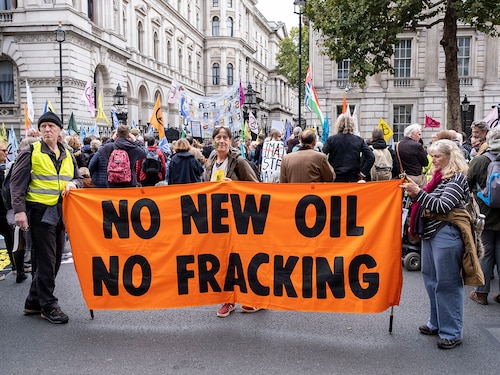How disclosure mandates can make fracking greener
Transparency requirements in U.S. states and mounting public pressure on fracking contributed to making surface water up to 14% cleaner


With fracking likely to continue unabated in the United States in the coming years, disclosure requirements may become an increasingly important tool to mitigate fracking’s environmental impact, according to recent research.
Any possibility of a ban on fracking evaporated with the election of Donald Trump as U.S. President. An enthusiastic proponent of fracking, Trump has nominated Chris Wright, a climate skeptic and fracking executive, to head the Department of Energy.
Short for hydraulic fracturing, fracking is the process of extracting natural gas and oil from extremely dense rock formations that resist extraction via traditional wells. Producers pump a high-pressure mixture of water, sand and chemicals to open fractures in the rock and access the resources.
Over the past two decades, fracking has become an enormously important component of American energy policy, propelling the U.S. to the position of the world’s largest producer of oil and natural gas, and bringing the country energy independence. But there are questions linked to the environmental costs of the practice — among them, whether it contaminates and depletes the surrounding water supply.
In groundbreaking research published in Science magazine in 2021, IESE’s Pietro Bonetti, Christian Leuz (University of Chicago) and Giovanna Michelon (University of Bristol) found that fracking was linked to higher salt concentrations in surface waters. Previous research had focused on groundwater contamination, while fracking’s impact on surface water had remained relatively unstudied.
To document this change, the researchers looked at a large geo-coded database of 154,324 fracking wells from 16 states and 325,351 surface water-quality observations from 2,209 watersheds with and without fracking activity, over the course of 14 years (2006-2019). The water-quality analysis focused on the concentrations of four salts (or ions) — bromide, chloride, barium and strontium — considered signatures of fracking because they are usually found in high concentrations in flowback and water produced from fracking wells, and they do not biodegrade.
The sample period coincided with the U.S. fracking boom. Many U.S. states introduced mandatory disclosure rules for newly fractured wells starting around 2010, which required operators to disclose details on their drilling activity and the chemical composition of the fluids used.
Aggregate concentrations of those four salts decreased between 9% and 14% after the state disclosure mandates went into effect.
Since it was possible that the improved water quality was the result of slower drilling activity, the researchers looked at whether production dropped or whether operator practices changed. While the entry rate of new fracking wells declined by almost 7%, the quantitative effect of this decline was small, and most of the improvement in water quality was the result of changes in practice. Specifically, the frequency of spills and leaks dropped, and the use of hazardous chemicals and chloride-related chemicals in fracking fluids declined after the disclosure mandates.
More important, the disclosure requirements were followed by an increase in local news coverage of fracking-related environmental impacts, in the number of volunteers at local anti-fracking NGOs, and in the occurrence of local anti-fracking protests. This is consistent with the idea that transparency puts fracking in the spotlight and creates public pressure. Indeed, the researchers found water quality improvements due to transparency mandates were greater in areas where public pressure was higher.
These findings have implications that go beyond fracking and surface-water quality. Countries looking to transition to a greener economy are looking at the environmental impact of everything from greenhouse gas emissions to waste management to energy use. Bans may be practically or politically impossible, but disclosure mandates can help galvanize public awareness and contribute to making industry practices more sustainable.
Pietro Bonetti, Associate Professor of Accounting and Control at IESE. His research interests focus on the consequences of disclosure and transparency regulation, corporate governance, as well as sustainability and environmental economics.
First Published: Feb 06, 2025, 12:07
Subscribe Now